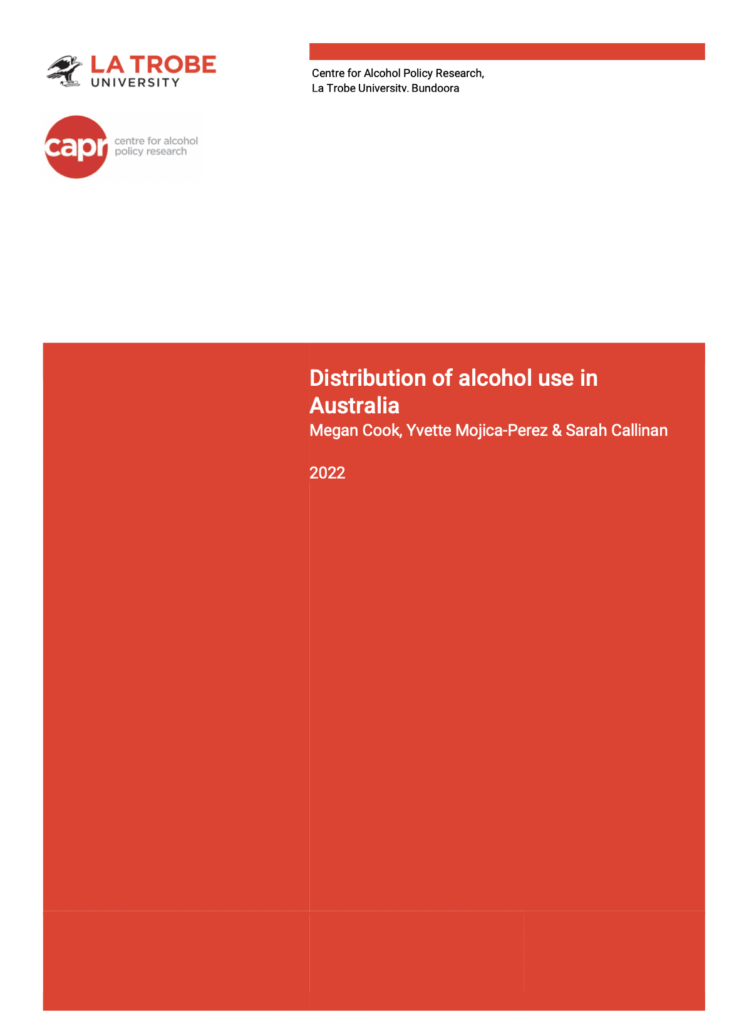If the COVID-19 pandemic has taught us anything it is how important health and well-being are for people around the world.
But the ethanol in beer, wine, and liquor products weakens the immune system, making people more vulnerable to the coronavirus. To make matters worse, alcohol is a major risk factor for non-communicable diseases (NCDs), such as cancer, cardiovascular disease, and mental ill-health. Both these factors make people more susceptible to contract the coronavirus, and to ave more severe progression of COVID-19. Especially with heavy alcohol use, alcohol use disorder, or addiction are exposed to an even higher risk of death and disease during the pandemic.
Nevertheless, the alcohol industry continues to target and profit from Australians with heavy alcohol use.
A compelling new report finds that the alcohol industry profits the most out of those who use alcohol the heaviest. Over a third of all alcohol products in Australia are used by 5% of the heaviest alcohol users.
These profits come at the expense of the health and wellbeing of families and communities across Australia.”
Mr. Luke Hutchins, Policy and Research Director, Foundation for Alcohol Research and Education (FARE)
The report released by the Foundation for Alcohol Research and Education (FARE) and undertaken by the Centre for Alcohol Policy Research (CAPR) was titled “Distribution of Alcohol use in Australia”. The report used data from the 2019 National Drug Strategy Household Survey (NDSHS) for its analysis.
Key findings from the report
- 5% of the heaviest alcohol users in the population used over a third (36.1%) of all alcohol products consumed.
- 10% of the heaviest alcohol users in the population used over half (54.1%) of all alcohol products consumed.
- 20% of the heaviest alcohol users in the population used about three-quarters (75.1%) of all alcohol products used in the country.
- Analysis of the 10% heaviest alcohol users found:
- Their most common alcohol product used was regular-strength beer and cask wine.
- The age groups more likely to be among the 10% of people who used alcohol the heaviest were 50 – 59-year olds (13%) and 40–49-year olds (12%).
- They were more likely to be men than women, and more likely to live in rural and regional localities.
- They were also more likely to report using alcohol in several locations, including at home, in pubs/clubs, and in public spaces.
Profiting at the cost of Australians’ health and well-being
Clearly, alcohol companies are profiting at the expense of people who are consuming alcohol heavily. This profit comes at the cost of the health and well-being of Australian people, families and communities.
This report clearly shows that alcohol companies rely on exploiting risky [alcohol use] with a large proportion of their sales relying on people who [use alcohol] the most,” said Mr. Luke Hutchins, Policy and Research Director, Foundation for Alcohol Research and Education (FARE), as per their website.
These profits come at the expense of the health and wellbeing of families and communities across Australia.
Mr. Luke Hutchins, Policy and Research Director, Foundation for Alcohol Research and Education (FARE)
Mr. Hutchins further adds that it is now easier than ever for alcohol companies to target people who might have alcohol problems via digital media. He says that, by design, alcohol companies are using digital marketing to easily identify, and target people based on purchasing history to push their products around the clock.
A previous report by FARE and the Cancer Council WA from 2020 found that the average Australian is exposed to an alcohol advertisement every 35 seconds on social media (Instagram and Facebook).
FARE calls for greater control of alcohol companies to protect people who are at the highest risk.
The alcohol industry’s conflict of interest
The findings of the report demonstrate the fundamental conflict of interest the alcohol industry has. Often Big Alcohol claims it does not promote heavy use, knowing fully well that large parts of their profits come from heavy alcohol consumption.
What these results are really doing is calling into question the industry and their intention when they say they want to reduce the [alcohol use] in heavy [alcohol users],” said Megan Cook, lead author of the study and research officer at the Centre for Alcohol Policy Research (CAPR), as per 6PR 882 News Talk.
Megan Cook, research officer, Centre for Alcohol Policy Research (CAPR)
Movendi International has revealed Big Alcohol’s fundamental and direct conflict of interest.
Increased alcohol consumption leads to increased negative health and development impacts, but also to increased sales for the alcohol industry, placing public health and development interests in an inherent and direct conflict with corporate interests.
Sources
FARE: “New Report: Alcohol companies reliant on people who drink at heaviest levels“
6PR882 News Talk: “Is the alcohol industry preying on our heaviest drinkers?“
The Canberra Times: “Top Aust drinkers consume 8 beers a day“
